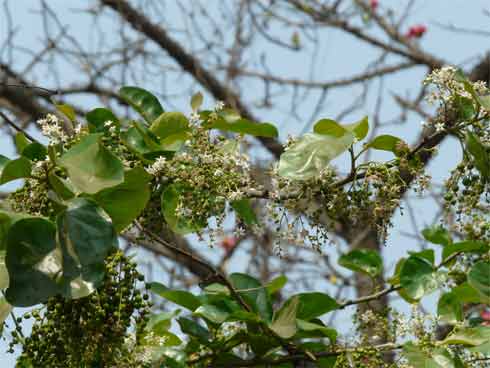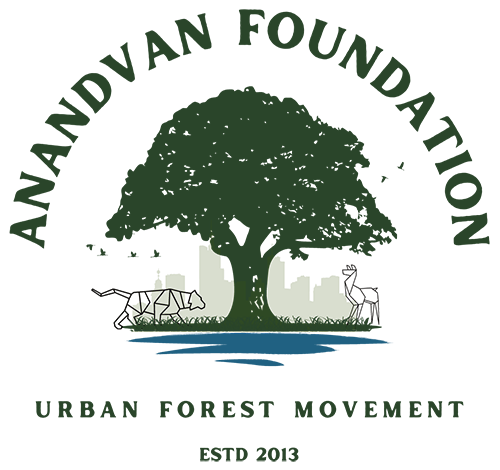Botanical name: Ehretia laevis Roxb | Hindi: अजान वृक्ष | Marathi: अजान वृक्ष | English Name: AjanVruksha

About
AjanVruksha (Khandu Chakka), also known as Ehretia laevis Roxb., is a captivating evergreen tree reaching up to 15 meters tall. Its smooth, grey bark often peels off, revealing an orange-red underlayer. Lush, green leaves with wavy margins adorn the branches throughout the year, adding a vibrant touch. During spring, clusters of small, white flowers with a sweet fragrance grace the tree, attracting pollinators like butterflies and bees. The most unique feature emerges later – small, green fruits that turn black upon ripening. These fruits, although not typically consumed, hold the essence of the tree’s allure.
Interesting Facts

AjanVruksha boasts a long history of use in traditional medicine. Various parts, including leaves, bark, and roots, are utilized for their potential medicinal properties. However, it’s crucial to remember that scientific evidence supporting these claims is limited. Some traditional uses include:
- Wound healing: Leaf extracts are used to promote wound closure and prevent infection.
- Fracture healing: Bark decoctions are used to manage pain and promote bone healing.
- Skin conditions: Leaf paste is applied topically for skin problems like eczema and psoriasis.
- Respiratory issues: Leaves are used in herbal preparations for cough and asthma.

Anandvan Trivia Quiz
Question 1: Did you know that AjanVruksha can survive in harsh environments and even thrives in neglected areas?
Answer: This resilient tree possesses a unique ability to fix nitrogen from the air, enriching the soil around it and making it less reliant on external nutrients. This adaptation allows it to flourish even in poor soil conditions, earning it the nickname “Khandu Chakka” (meaning “tough bark”) in some regions.
